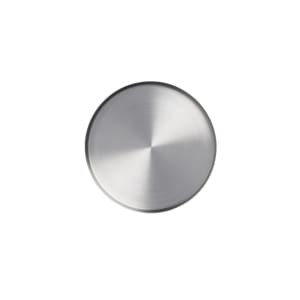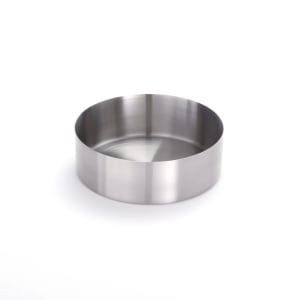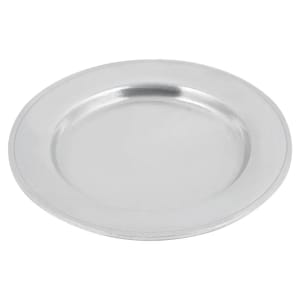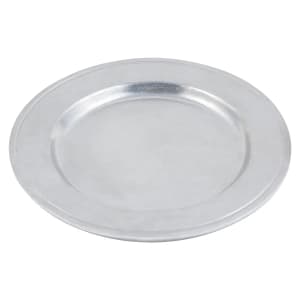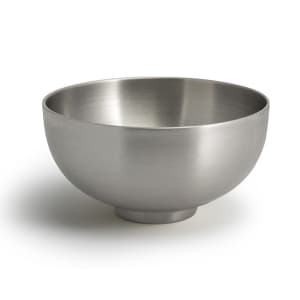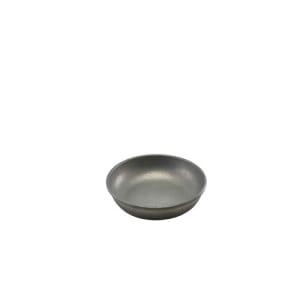Metal Dinnerware
Metal dinner plates are a unique way to highlight the menu items you're most proud of – we'll help you sort through the different metals and styles below. More
Stainless Steel Dinnerware: What You Need to Know
Metal dinnerware adds a striking element to any table setting. Its shining finish draws the eye, while the clean design of metal dinnerware complements a wide variety of other pieces and decorations. Metal dinner plates also are incredibly durable compared to some other options, which means you don't need to replace them nearly as often. Stainless steel and aluminum are easy to clean and most are dishwasher safe. All these benefits make aluminum and stainless steel dinnerware appealing choices for restaurateurs looking to add an element of interest to their tables.
In addition to aluminum dinner plates, this category contains a variety of metal bowls, dishes, and servers, most of which are designed to bring an eye-catching aesthetic to your table. The shine of stainless steel dinnerware is striking against more commonplace pieces and works great as a centerpiece to catch the light. Metal dinnerware can be used to great effect in showcasing a vibrantly colored dish, such as fresh fruit or vegetables, as the sheen of the metal reflects and enhances that color.
The last major benefit of steel dinner plates and other metal dinnerware is durability. If these are dropped, handled roughly, or clattered around in the dishwasher, they're likely to survive without any damage. This means whatever amount you're paying for replacement dinnerware can be reduced significantly if you invest in metal dinner plates. Metal plates often are preferred for fresh or cold food items, such as salad, because the plates take longer to return to room temperature than melamine or ceramic plates. This means a refrigerated metal plate can help keep your salads or other chilled items cool all the way to the table. Check the specifications page for each product to see the exact type of metal used in its construction, as well as other features it may offer.
Common Questions About Metal Dinnerware
What are metal dinner plates made of?
The two main materials used to create metal dinnerware are aluminum and stainless steel. These materials resist corrosion, which is vital in a metal piece that'll likely be submerged frequently during cleaning and will host acidic liquids, such as tomato sauce. Aluminum typically is less expensive than stainless steel but isn't as durable when subjected to the dropping and banging of a high-volume foodservice establishment. Stainless steel is a stronger material but will cost operators more than aluminum.
Steel must be at least 11 percent chromium to be classified as stainless steel, as the inclusion of this element makes it resistant to rust. Stainless steel dinnerware is usually 18 percent chromium and is further varied based on the percentage of nickel included. If you see steel listed as 18/8 or 18/10, that means it has 18 percent chromium and 8 or 10 percent nickel, respectively. The inclusion of nickel gives steel dinner plates extra shine and added strength, but the higher the nickel percentage, the costlier these pieces become.
Aluminum is softer than stainless steel, so in a busy restaurant you'll have to replace aluminum more frequently than steel dinner plates. On the other hand, each aluminum dinner plate is cheaper than its stainless steel alternative. Aluminum can be anodized as well, which strengthens the external layer and sometimes imparts a smoother finish. Anodization also gives aluminum a decorative sheen – but again, this leads to higher pricing.
How should I care for my metal dinnerware?
Consult the product specification page for the individual products you're considering to see if they can be cleaned in commercial dishwashers. Stainless steel should be rinsed after washing to remove any excess chemicals that might prematurely wear down the metal. Operators also can use a mixture of baking soda and water to clean and polish the steel gently. Aluminum can be cleaned with acidic products, such as vinegar and lemon juice, to remove stains.
For both steel and aluminum dinner plates, there are a few things to keep in mind:
- Don't use steel wool and metal brushes to clean these materials. If you scratch the finish, that creates a rough surface where bacteria can grow.
- Avoid using cleansers that contain chlorine, though if you must clean these pieces with chlorine, rinse them afterwards.
- Ensure your water doesn't deposit minerals on your metal dinnerware. We recommend using a water filter for a commercial dishwasher, and if you're washing by hand, consider a treatment system to soften the water before it reaches your sink.

